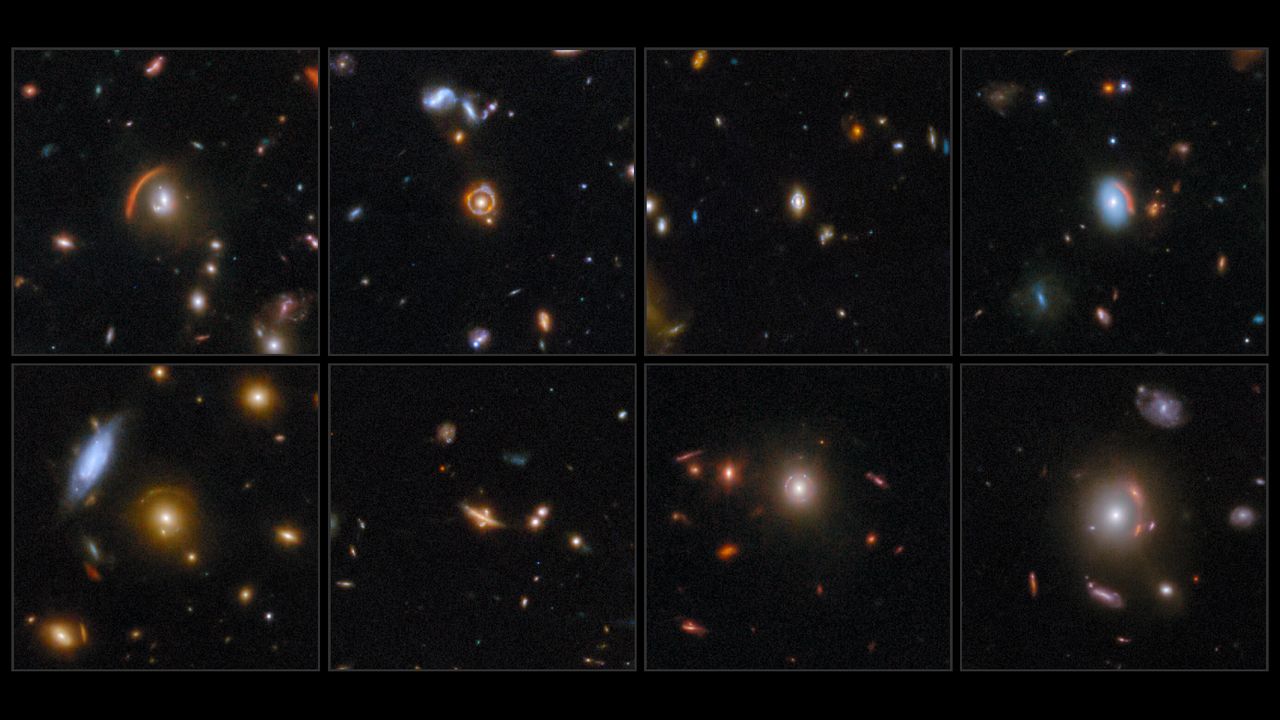The James Webb Space Telescope (JWST) has captured images of eight distinct gravitational lenses, known as “Einstein rings,” providing a stunning confirmation of Albert Einstein’s predictions about the universe. This remarkable discovery was shared on September 30, 2025, showcasing the telescope’s ability to reveal cosmic phenomena that were previously hidden from view.
These eight gravitational lenses, which appear stretched, warped, or bent into perfect circles, are not mere photographic artifacts. Instead, they are the result of a natural cosmic effect known as gravitational lensing. In this process, massive galaxies act like magnifying glasses, bending the fabric of space around them. When light from more distant galaxies passes through this warped space, it curves, creating striking visual distortions. The resulting formations, including the iconic Einstein rings, occur when the alignment between the observer, the lensing galaxy, and the background galaxy is just right.
Significance of Gravitational Lensing
Gravitational lensing plays a crucial role in modern astronomy, allowing scientists to observe galaxies that would otherwise remain invisible. By magnifying and amplifying light from far-off galaxies, these lenses not only enhance visibility but also enable astronomers to gather data on the mass of galaxies, including dark matter, which cannot be observed directly.
The newly released images stem from the COSMOS-Web project, one of the largest observing programs undertaken using the JWST. Over the course of 255 hours, researchers directed the telescope’s powerful instruments at more than 42,000 galaxies, resulting in the identification of over 400 potential Einstein rings. The eight rings highlighted in this recent release represent some of the most striking examples.
The standout among these images is the one showcasing the galaxy COSJ100024+015334. This image reveals the galaxy as it existed when the universe was just one billion years old—a mere fraction of its current estimated age of over 13 billion years. While some of these galaxies had previously been observed using the Hubble Space Telescope, the JWST’s advanced infrared capabilities have unveiled intricate details that were previously obscured.
Exploring the Distant Universe
The rare configurations that lead to the formation of Einstein rings allow astronomers to delve into the fundamental building blocks of galaxies, star clusters, and supernovae. These cosmic snapshots offer valuable insights into how galaxies have evolved over time and how dark matter has influenced the structure of the universe in its formative years.
As the JWST continues to unveil the mysteries of the cosmos, it stands as a testament to human ingenuity and our quest to understand the universe. The stunning images not only captivate the imagination but also deepen our understanding of the fundamental laws that govern the cosmos. For those interested in exploring the wonders of space further, the JWST’s ongoing discoveries promise to deliver even more breathtaking insights into the universe’s vastness and complexity.
